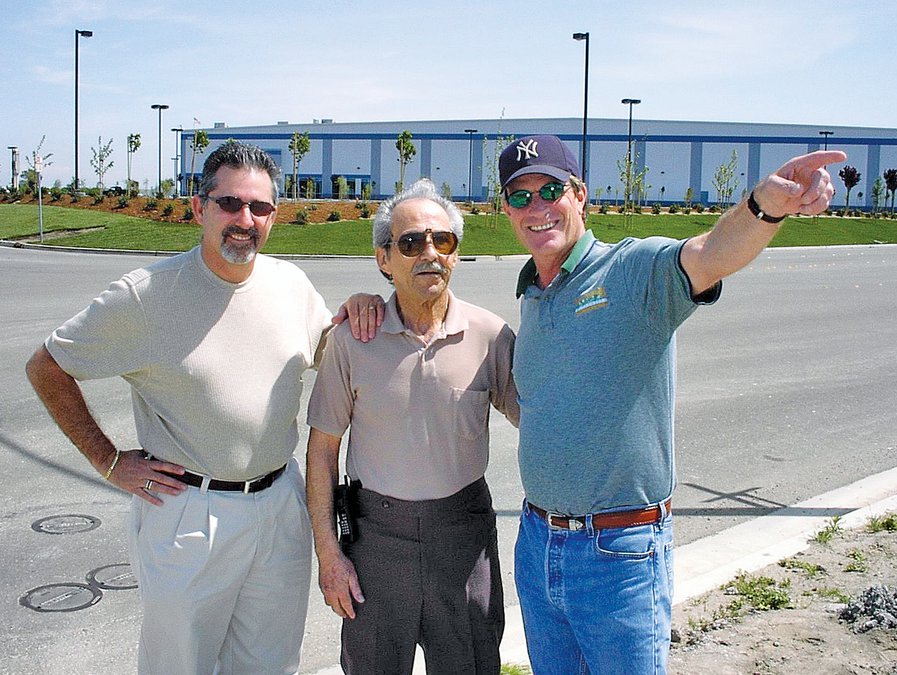It was the biggest pile of rubble Manteca had ever seen.
The four 15-story sugar silos that once symbolized Manteca’s economic might were in a huge pile while much of the old warehouses and factory were torn apart.
What rose out of that mess is something that many thought could never be done — Manteca’s first multi-use endeavor that turned 365 acres of an abandoned sugar plant, livestock yard, and almond orchard into almost 3,000 jobs and 168 homes. It created roughly 15 times the jobs that were lost when Spreckels Sugar closed.
It took just 10 years — the span of the last decade – to take Spreckels Sugar from a potential cancerous blight on Manteca’s landscape to a textbook case of urban renewal.
And while the start of the housing book at the dawn of 2000 and the devastating impact of the housing bubble burst was the dominate story of the decade, the sweetest story of the past 10 years without a doubt is Spreckels Park.
It almost didn’t happen.
“No one wanted to touch it,” recalled developer Mike Atherton of AKF Development in an interview nine years ago. “No one had ever dismantled an abandoned sugar plant. They said it couldn’t be done…. Anyone can take flat farm acres and put up a development. It is a challenge to do something like tear down a sugar mill and make it work.”
It was a roll of the dice for Atherton and Bing Kirk who was his only partner at the time. Banks said thanks but no thanks. Other developers looked at the sugar plant and just saw a massive clean-up bill.
As for Atherton, home building was still sluggish from the recession in the early part of the 1990s. He had never done a commercial project before let alone a business park that first required disposing of enough lime to meet farming needs in San Joaquin County for the next 75 years. He was told it would cost $10 million alone just to truck away the lime and dispose of it. Then there was the issue of the concrete silos.
Two things happened that Atherton credits with making his vision work. First was the addition of Bill Filios to the partnership who brought with him a wide repertoire of commercial and business park experience having worked with Alex Spanos for years. The other critical element was partnering with the Manteca redevelopment Agency.
Top city bureaucrats were leery at the time as the RDA had a relatively small tax base. They preferred easy projects. Spreckels Sugar though was the poster child for what RDA was intended for namely eliminating urban blight and creating new jobs.
Fodo-4-Less and Frito Lay opened in 1999. The partnership still had a challenge. They had to get the infrastructure in place — the rest of the roads, sewer and water lines yet they couldn’t secure financing as banks still thought it wouldn’t work. That’s’ when a $5 million RDA loan — that was paid back years ahead of schedule with interest — tipped the scale. The improvements went in and they secured ADPS Packaging and everything picked up speed after that.
There was a critical $1 million performance “loan” that was not paid back in cash but simply would be forgiven if Home Depot opened on time and generated projected sales tax. That $1 million helped put in Commerce Drive allowing Home Depot to open.
Without Spreckels Park
Manteca’s economy today
be more like Madera
Former Manteca Mayor Willie Weatherford who served on the city council during the entire time since Spreckels Park got underway noted in 2010 that the project “was the linchpin” that made everything else possible.
“It created a huge property tax base that allowed us to do other RDA projects,” Weatherford noted at the time.
That infrastructure included roadways and such that made it possible for Manteca to snare Bass Pro Shops, The Promenade Shops at Orchard Valley, Stadium Retail Center, and pay for the construction of the Big League Dreams sports complex.
Atherton boldly predicted at the dawn of 2000 that Spreckels Park would virtually be completed in 10 years. Experts told the city that was impossible as such a project would take 25 years or so. The project today is 90 percent completed with only several parcels to be developed.
When all was said and done, 98 percent of the sugar plant was recycled.
The concrete from the silos was crushed and used as base for the widening of Highway 99 between Ripon and Manteca. Atherton calls that stretch of freeway “the sweetest roadway in California.”
A soil engineer was brought in and the lime was mixed in with tear dirt. It was a process that took almost a year just to move land around, mix it properly to pass state standards and to level it for development. It eliminated the $10 million trucking and disposal cost.
All the bricks were recycled as was the steel.
To contact Dennis Wyatt, e-mail dwyatt@mantecabulletin.com





